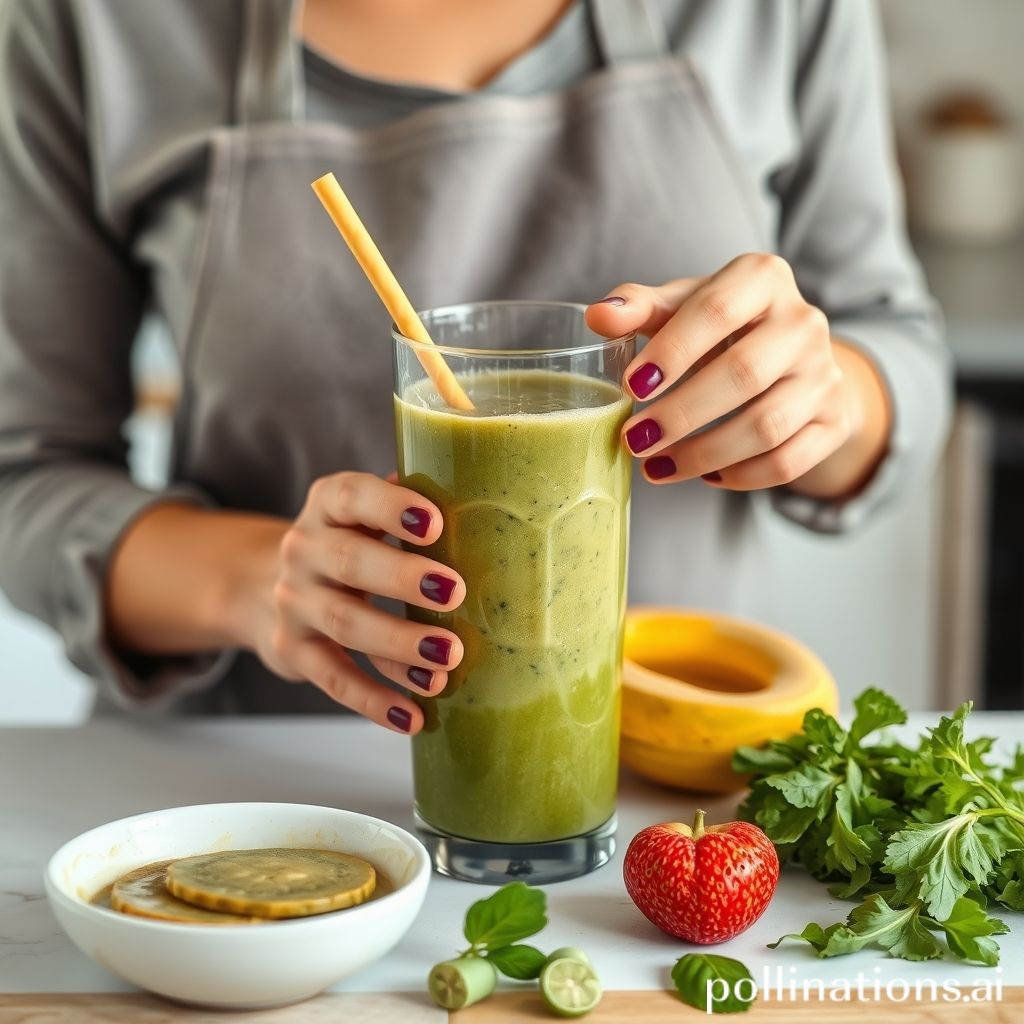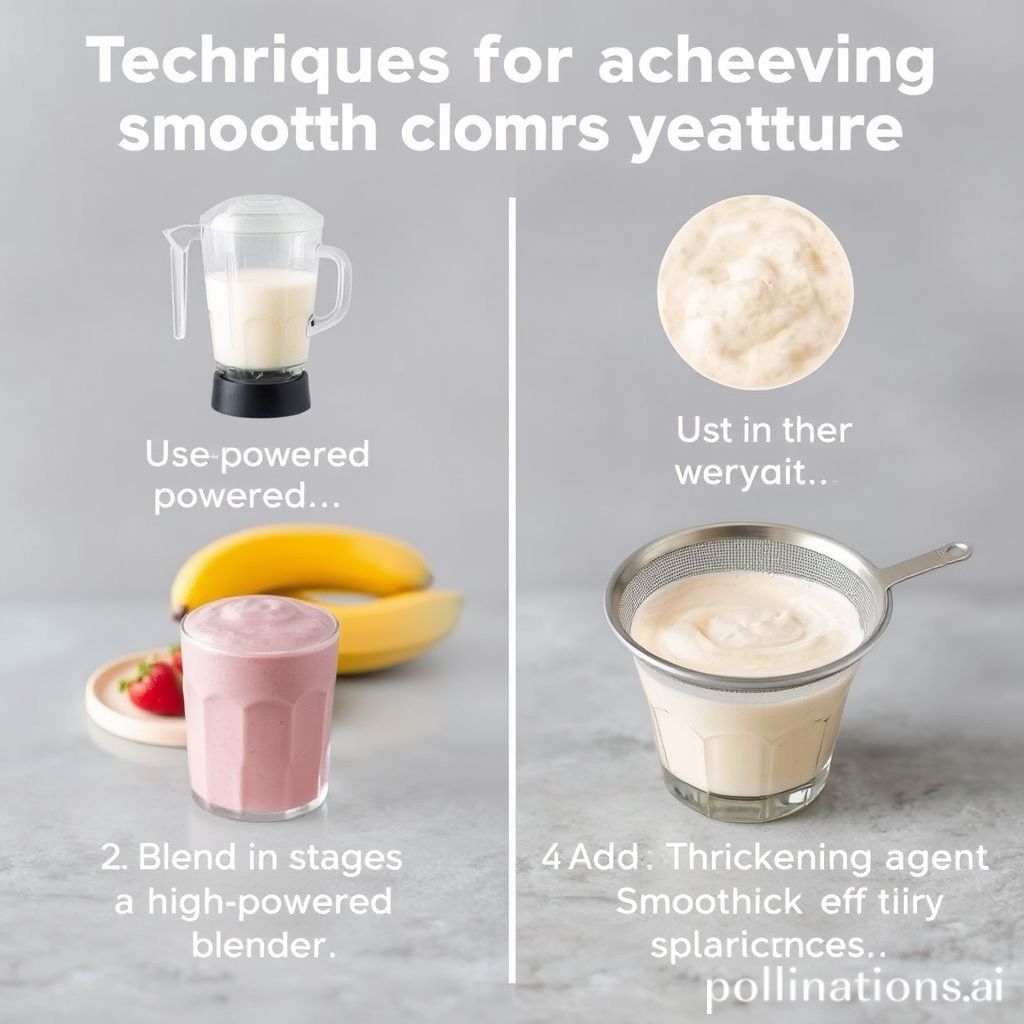How Can I Make A Smoothie That Has Less Foam And Bubbles?
[su_note note_color=”#fb8e00″ text_color=”#000000″ radius=”12″]
Foam and bubbles can be a common issue when making smoothies. Many individuals desire a smoother and more enjoyable texture in their smoothies, and are actively seeking tips and techniques to reduce the amount of foam and bubbles during the blending process.
Whether it’s achieving a creamy consistency or simply avoiding the annoyance of foam sticking to the sides of the glass, finding ways to make a smoothie with less foam and bubbles is a popular concern among smoothie enthusiasts. By implementing certain strategies, such as adjusting ingredient ratios or utilizing specific blending methods, it is possible to create a perfectly smooth and bubble-free smoothie.
[su_box title=”
[/su_box]

Comprehending the Cause of Foam and Bubbles in Smoothies
When making a smoothie, it’s important to know why foam and bubbles form and how to reduce them. By Comprehending the blending process and the ingredients that create foam, you can achieve a smoother texture and a more enjoyable smoothie.
1. Blending Process and Speed
The blending process and speed are key factors in the formation of foam and bubbles. Blending ingredients at high speeds for a long time incorporates air into the mixture, creating foam. To minimize foam:
- Use low or medium speed settings instead of high speed.
- Avoid over-blending. Blend until the ingredients are well combined but not excessively.
- To release trapped air bubbles, pause the blender and gently tap it on the countertop.
2. Ingredients that Create Foam
Some ingredients naturally create more foam and bubbles when blended. Knowing these ingredients can help you make informed choices:
| Ingredients | Tips |
|---|---|
| Dairy Products (Milk, Yogurt) | Opt for low-fat or non-fat versions as they produce less foam. Alternatively, try using plant-based milk or yogurt alternatives. |
| Protein Powders | Look for protein powders designed to minimize foam formation, such as whey protein isolate or collagen peptides. |
| Certain Fruits | Fruits like bananas and avocados can contribute to foaminess. Use them in smaller quantities or combine them with other fruits. |
By being mindful of the blending process, adjusting the speed, and choosing ingredients wisely, you can create a smoothie with less foam and bubbles. Experiment with different techniques and ingredient combinations to find what works best for you. Enjoy a smoothie with a delightful texture and no unwanted foam!
[su_highlight background=”#f6b40f”]Expert Tips: Blend at low/medium speed, avoid over-blending, tap blender to release air bubbles. Use low-fat/non-fat dairy or plant-based alternatives. Choose protein powders designed to minimize foam. Use certain fruits in smaller quantities or combine with other fruits. Experiment for best results.[/su_highlight]
Tips for Reducing Foam and Bubbles in Smoothies
Here are some tips to help you reduce foam and bubbles in your smoothies:
1. Use Frozen Fruits
Using frozen fruits in your smoothies can effectively reduce foam and bubbles. When fruits are frozen, they release less air during blending, resulting in a smoother texture with fewer bubbles. Additionally, frozen fruits can help chill the smoothie without the need for ice, which can contribute to foam formation.
2. Add Liquid First
To minimize foam and bubbles, it is recommended to add the liquid ingredients first before adding the fruits or other ingredients. This allows the blender blades to properly mix the liquid and break down any potential air pockets, reducing the amount of foam produced during blending.
3. Blend on Low Speed
Blending your smoothie on a low speed setting can also help reduce foam and bubbles. High-speed blending introduces more air into the mixture, resulting in a frothy texture. By blending on a lower speed, you allow the ingredients to blend together more smoothly, minimizing the amount of air incorporated into the smoothie.
4. Avoid Over-blending
Over-blending your smoothie can lead to excessive foam and bubbles. It is important to blend your ingredients just enough to achieve a well-mixed consistency. Prolonged blending can introduce more air into the mixture, causing it to become frothy. Keep an eye on the blending process and stop once you have reached the desired texture.
| Tips for Reducing Foam and Bubbles in Smoothies: |
|---|
| 1. Use frozen fruits |
| 2. Add liquid first |
| 3. Blend on low speed |
| 4. Avoid over-blending |
Techniques for Achieving a Smooth and Creamy Texture
1. Use a High-Powered Blender
Investing in a high-powered blender can greatly improve the texture of your smoothie. These blenders are designed to blend ingredients thoroughly, resulting in a smoother consistency with fewer foam and bubbles. The powerful motor and sharp blades ensure that all the ingredients are properly mixed, giving you a velvety smooth smoothie.
2. Blend in Stages
Instead of adding all the ingredients at once, blend them in stages. Start by blending the liquid base, such as milk or juice, with leafy greens or soft fruits. Once you have a smooth base, gradually add the remaining ingredients, such as frozen fruits or ice cubes. This method provides better control over the blending process and reduces the formation of foam and bubbles.
3. Add a Thickening Agent
To achieve a creamier texture and minimize foam, consider adding a thickening agent to your smoothie. Ingredients like yogurt, nut butter, avocado, or chia seeds can add richness and density to the blend, resulting in a smoother consistency. These thickening agents help bind the ingredients together, preventing excess air from being incorporated and reducing the formation of foam and bubbles.
4. Strain the Smoothie
If you’re still struggling with excessive foam and bubbles, try straining your smoothie after blending. Use a fine-mesh sieve or cheesecloth to pour the mixture through, allowing the liquid to pass through At the same time capturing any foam or bubbles. This extra step can help achieve a smoother texture by eliminating unwanted air pockets.
By using these techniques, you can enjoy a delicious and satisfying smoothie with a smooth and creamy texture, without excessive foam and bubbles. Experiment with different combinations and proportions to find the perfect balance for your taste preferences.

Experiment with Different Ingredients
If you want a smoother smoothie with less foam and bubbles, try experimenting with different ingredients. By making substitutions and additions, you can achieve a smoother and more enjoyable texture.
1. Substitute Dairy Milk with Non-Dairy Alternatives
One common cause of foam and bubbles in smoothies is the use of dairy milk. To reduce these effects, try substituting dairy milk with non-dairy alternatives like almond milk, coconut milk, or oat milk. These alternatives tend to produce less foam and result in a smoother consistency.
2. Use Nut Butter or Avocados for Creaminess
If you want to add creaminess to your smoothie without causing excess foam, consider using nut butter or avocados. These ingredients provide a smooth texture and can help bind the other ingredients together, reducing the amount of foam and bubbles that form.
3. Add Yogurt or Yogurt Alternatives
Another way to achieve a smoother texture in your smoothie is by adding yogurt or yogurt alternatives. The creamy consistency of yogurt helps reduce foam and bubbles, resulting in a more enjoyable drinking experience. If you prefer non-dairy options, you can try using soy or coconut yogurt.
Table: Non-Dairy Milk Alternatives
| Non-Dairy Milk Alternatives |
|---|
| Almond milk |
| Coconut milk |
| Oat milk |
[su_note note_color=”#ea2e0c” text_color=”#ffffff” radius=”8″]Extra Tips: Experiment with different ingredients for a smoother smoothie with less foam and bubbles.[/su_note]
How to Make a Smoothie with Less Foam and Bubbles
Chill the ingredients beforehand
Making a smoothie that is free from excessive foam and bubbles can greatly enhance the overall texture and taste. To achieve a smooth and enjoyable smoothie experience, follow these simple steps. One effective technique is to chill the ingredients beforehand. This helps minimize foam formation during the blending process.
1. Freeze fruits and vegetables
To reduce foam and bubbles in your smoothie, freeze the fruits and vegetables before blending them. Freezing the ingredients maintains their freshness and slows down the release of gas bubbles when blending. This results in a smoother consistency and reduces the amount of foam produced. Consider freezing fruits like bananas, berries, and mangoes, as well as vegetables like spinach or kale, to enhance the texture of your smoothie.
2. Pre-chill the liquid
Another effective technique is to pre-chill the liquid you use in your smoothie. Use cold liquids, such as water, milk, or juice, to prevent excessive foam from forming. The cold temperature slows down the release of gas bubbles, resulting in a smoother and less foamy texture. Consider placing the liquid in the refrigerator for a short time before using it in your smoothie recipe.
Conclusion
Reducing foam and bubbles in your smoothies is achievable with a few simple techniques. Start by using frozen fruits instead of ice to minimize air incorporation.
Additionally, allowing your blender to run for a shorter duration and avoiding high-speed settings can help minimize foam formation. Straining the smoothie after blending can further remove any remaining bubbles. Lastly, adding ingredients like yogurt or avocado can contribute to a creamier texture Whilst reducing foam. By implementing these tips, you can create delicious smoothies with a smoother and more enjoyable consistency.
Faq about Making a Smoothie with Less Foam and Bubbles
FAQ 1: Why does my smoothie have so much foam?
Smoothies can develop foam due to various factors, such as the ingredients used and the blending process. Certain fruits, like bananas and berries, are known to create foam when blended. Additionally, using high-speed blenders or blending for an extended period can introduce more air into the mixture, resulting in foam.
FAQ 2: Can I use a hand blender to reduce foam in my smoothie?
Yes, using a hand blender can help reduce foam in your smoothie. Hand blenders generally have lower speeds compared to high-speed blenders, which means less air is incorporated during blending. By using a hand blender and avoiding excessively blending, you can minimize foam and bubbles in your smoothie.
FAQ 3: Will adding ice reduce foam and bubbles?
Adding ice to your smoothie may actually increase foam and bubbles. When ice is blended, it can further introduce air into the mixture, leading to more foam. If you want to reduce foam, it is advisable to skip adding ice or use chilled ingredients instead.
FAQ 4: Should I avoid using carbonated water in my smoothie?
Yes, it is recommended to avoid using carbonated water in your smoothie if you want to minimize foam. Carbonated water contains dissolved carbon dioxide, which can significantly increase the amount of foam and bubbles in your smoothie.
FAQ 5: Can I prevent foam by using specific blending techniques?
Yes, you can prevent foam by employing certain blending techniques. Start by blending the liquid and leafy greens first before adding other ingredients. This helps create a smooth base without excessive air incorporation. Additionally, pulsing the blender instead of continuous blending can also reduce foam. Finally, avoid overfilling the blender jar to allow proper circulation and prevent excessive air from getting trapped, resulting in less foam and bubbles in your smoothie.
Read Similar Post:
1. Preserve the Perfect Flavor: The Best Tomatoes for Canning
2. Juicing Oranges 101: Mastering the Art of Using a Juicer for Fresh Citrus Juice
